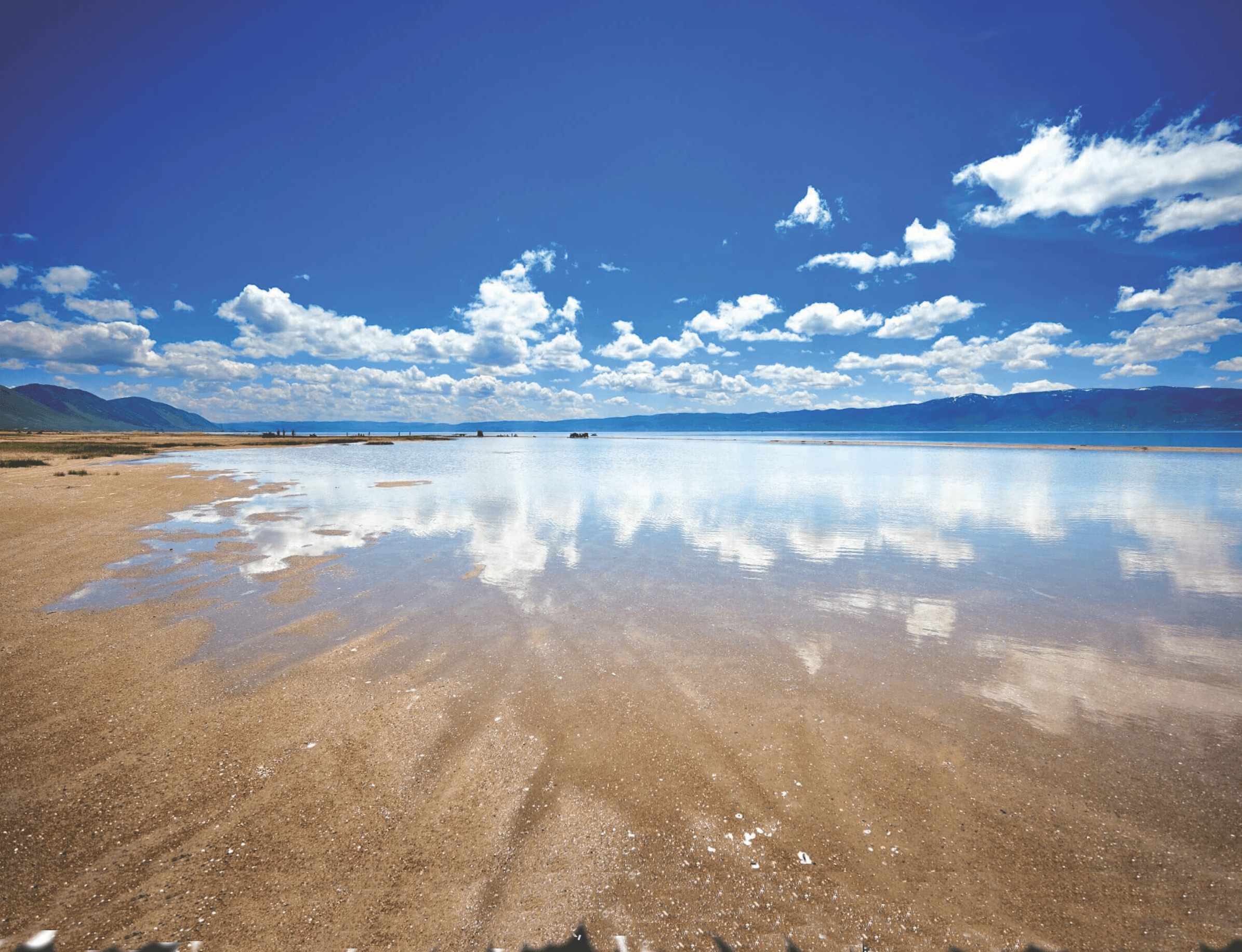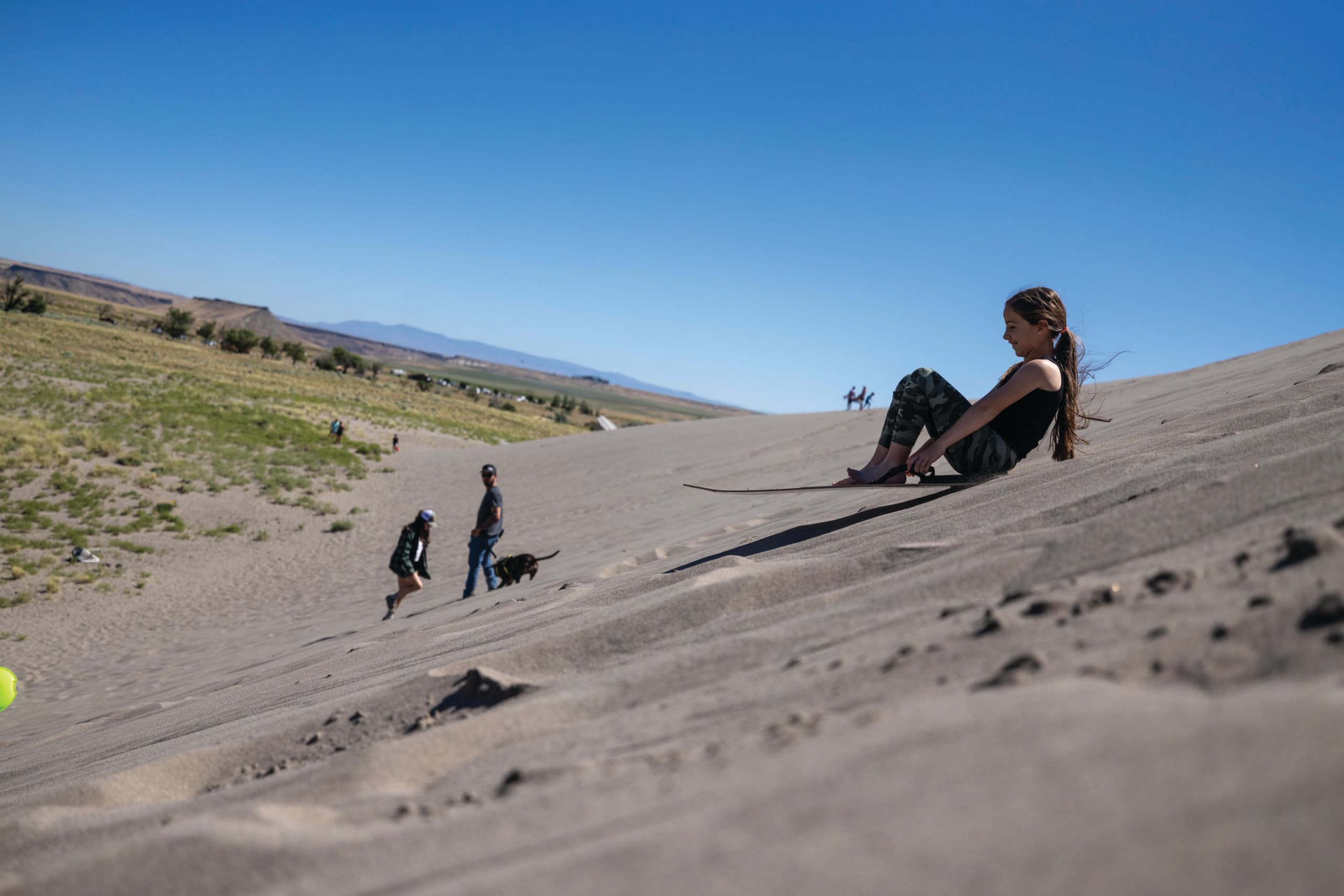Rocks, Water, and Sand
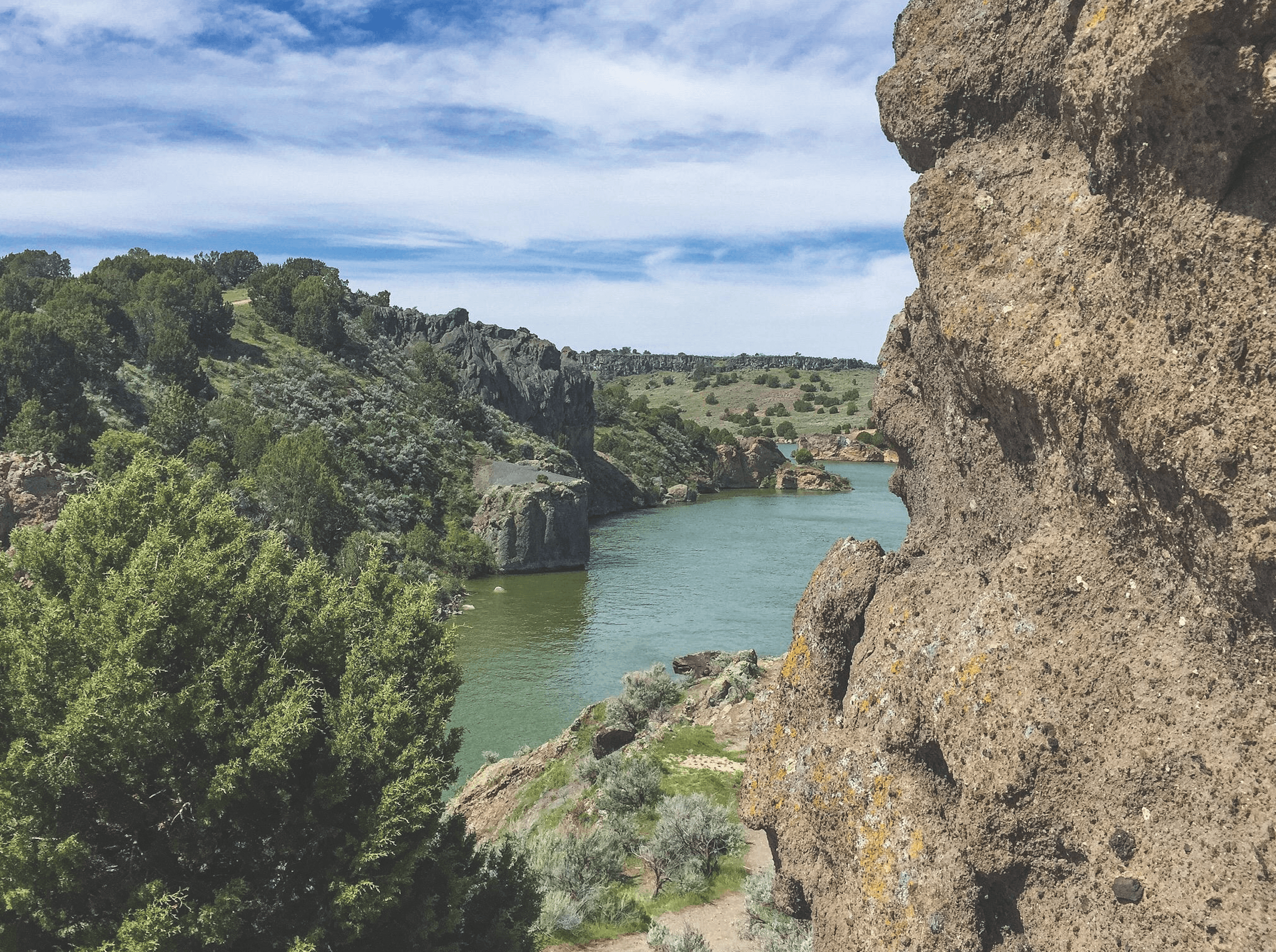
The Idaho Department of Parks and Recreation’s mission is “to improve the quality of life in
Idaho through outdoor recreation and resource stewardship.”
This seems a rather mundane way of putting it, when you look at all the agency has to offer.
In fact, to declare that Idaho boasts quite a variety of state parks is like saying the Kansas City Chiefs are a pretty good football team. Take just the following three—out of thirty choices—two of which are just under 150 miles from Victor, while the third is twice that far away. (Yes, Idaho is large, but consider that Priest Lake State Park is more than 600 miles away from Teton Valley, and you need to traverse a big chunk of western Montana to make the shortest connection.)
These three parks showcase 1) a Caribbean-hued freshwater “sea” shared 50-50 with the state of Utah; 2) a river and trails steeped in American pioneer history; and 3) a desert sandscape suggestive of the setting for a movie like Dune or Lawrence of Arabia. Each offers a fine selection of campsites, and the areas you’ll drive through to get to them dish up a splendid mix of Idaho’s landscapes and diversity of farm crops.
Additional information on these and other parks may be found at parksandrecreation.idaho.gov.
To get to Massacre Rocks you could zip over to Idaho Falls and take Interstate 15 to American Falls before continuing the ten miles to the state park. But really, shouldn’t getting there be part of the adventure?
So, consider taking the backroads route instead: Blackfoot to Aberdeen to American Falls via Idaho 39, which cuts through some of the state’s richest agricultural lands as well as a string of dots on the map you might not have heard of. (Rockford? Pingree? Springfield?) During the fall, mountains of piled sugar beets hover above the roadsides. Roll down the windows of your rig and breathe deep to inhale the earthy aroma of harvest season.
Massacre Rocks’ name reportedly derives from a jumble of boulders that form a narrow passageway that Oregon Trail and California Trail travelers squeezed their teams and wagons through. Imagining that a band of American Indians lie waiting in ambush around every corner, pioneers applied the name Massacre Rocks to the area. Deep ruts marking those historic trails can still be seen in the park, which features nearly eight miles of hiking trails. Bicycling, rock climbing, a vertically challenging disc golf course, and boating and fishing (with canoe rentals available) can be enjoyed, too. Nearly a thousand acres in scope, the park also includes a great selection of RV and tent camping sites.
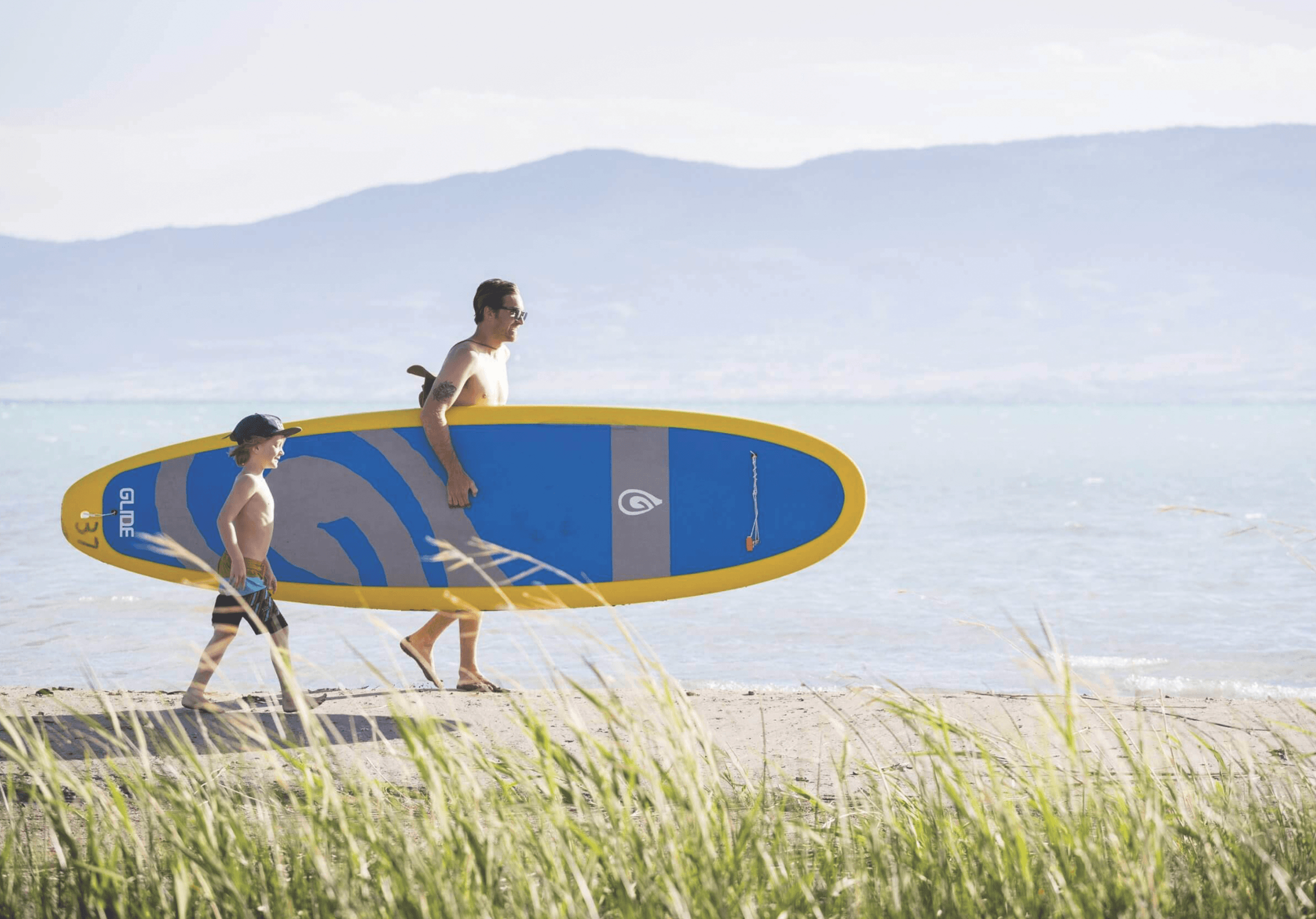
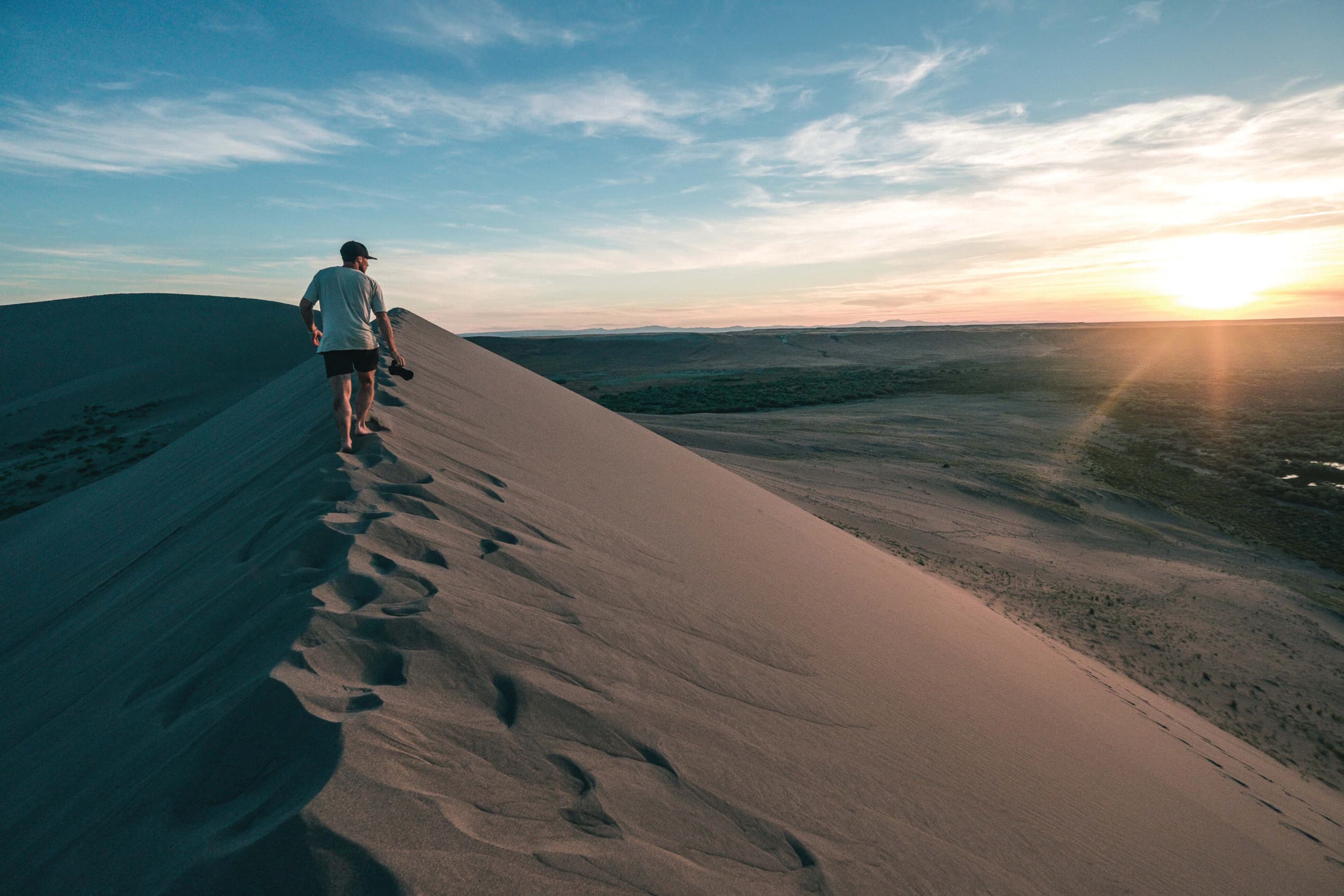


On our most recent visit to the park, I was treated to the unexpected vision of an immense white sturgeon rocketing out of the river and splashing back in. With a cartilaginous skeleton and sharklike tail, these giants—which can grow to ten feet long and 400 pounds in weight—have, in lieu of scales, five rows of bony plates, or “scutes,” reaching from gills to tail. It’s not known for certain why they exhibit this occasional, energy-sapping jumping behavior, but it’s hypothesized that it’s a form of communication that helps maintain group cohesiveness.
To get to Idaho’s Bear Lake State Park—not to be confused with Utah’s nearby park of the same name—travel from Swan Valley, Idaho, southeast to Alpine, Wyoming, then continue south to Montpelier, Idaho, via either Star Valley, Wyoming, or Soda Springs, Idaho. Expect a beautiful drive whichever route you choose. The park is about 15 miles south of Montpelier.
Backdropped to the west by the Bear River Range, this water-lover’s paradise is twenty miles long and eight miles wide, cleaved almost exactly in half by the Idaho–
Utah state line. The state park’s mile-long Bear Lake North Beach offers a vast area for swimming and other water play, with its gradual slope toward the middle of the lake. Sites at East Beach’s ultra-popular Mountain Fawn Campground are available only by reservation, which can be made up to nine months in advance.
With its sun-seeker vibe, this is not the park to visit if you’re looking for peace and quiet. That, however, can be found just north of the park at Bear Lake National Wildlife Refuge, established in 1968 to preserve resting and feeding habitat for waterfowl and other migratory birds. Its 18,000 acres comprise a picturesque and tranquil (although sometimes honkingly loud!) mosaic of open water, wet meadows, cattail marshes, and sunbaked uplands.
Garden City, on the west shore of the lake just across the state line in Utah, is deliciously renowned for its raspberry milkshakes. The most popular spot to slurp one is LeBeau’s Drive-In, but a host of other shake venues can be found. If summer could be plucked from the vine and whipped up in a blender, this is what it would taste like.
This final park is the place to enjoy peace and solitude. The last time we visited, in October of 2019, we had the campground to ourselves. Nancy, our field spaniel Eddie, and I hiked to the top of the namesake dune, and ours were the only footprints in the sand to be seen.
To reach the park, avoid Interstates 15 and 86 and opt instead for the stellar drive between Idaho Falls and Mountain Home on US Highway 20. From Mountain Home, go south on State Highway 51, cross the Snake River, then go east on State Route 78 for a couple of miles before turning south onto the park entrance road.
Thanks to its relatively low, Idaho westside elevation of 2,470 feet above sea level, Bruneau Dunes boasts the longest camping season—virtually year-round—of any Gem State park. But, one may ask, from what point in the park was that official elevation measurement taken? After all, it boasts the tallest single-
structured sand dune in North America, with a peak standing nearly 500 feet above the surrounding desert floor. You can hike up the dune and then run back down, or even rent a board at the visitor center for a unique “sand-boarding” experience.
But before you descend, stop and listen. What’s that sound you can’t hear? Total silence is what it is.
This is also a true dark-sky place, explaining why Bruneau Dunes was chosen as the site for an observatory established in 1998 in partnership with the Boise Astronomical Society. A second observatory was added in 2023. Visitors can earn marvelous peeks at distant planets and stars on Friday and Saturday nights from early April through mid-October, weather permitting.
For another form of evening entertainment, remember that wineries are scattered throughout southwest Idaho. The one closest to Bruneau Dunes State Park is Cold Springs Winery, 17 miles east near the little town of Hammett.
